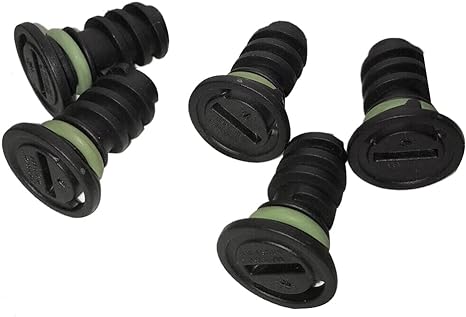m14x1 25 oil drain plug
Understanding the M14x1.25 Oil Drain Plug Specifications, Importance, and Best Practices
The M14x1.25 oil drain plug is an essential component in the automotive and machinery sectors, specifically designed to ensure the efficient drainage of oil from engines and other machinery. This article explores the specifications, importance, and best practices associated with this crucial component.
Specifications
The term M14x1.25 refers to the metric thread size of the oil drain plug. The M indicates that it is a metric screw thread, 14 represents the diameter of the thread in millimeters, and 1.25 denotes the pitch, which is the distance between threads, measured in millimeters. This size is common across various vehicles and machinery, making it a versatile option for many applications.
Typically made from materials like steel or aluminum, M14x1.25 oil drain plugs are often coated to resist corrosion and wear. Some models even feature a magnet to catch metal debris during oil changes, helping maintain engine cleanliness and efficiency. Regular inspection and replacement of these plugs are vital for preventing leaks and ensuring optimal performance.
Importance of the M14x1.25 Oil Drain Plug
Oil drain plugs serve several critical functions
1. Leak Prevention A properly fitted oil drain plug prevents oil leaks, which could lead to insufficient lubrication and potential engine damage. A compromised drain plug can result in significant oil loss, impacting engine performance and longevity.
2. Efficient Oil Changes During routine maintenance, the oil drain plug allows for rapid and complete oil drainage. This ensures that old oil is adequately removed before new oil is added, enhancing the effectiveness of oil changes.
3. Debris Collection Some drain plugs, equipped with magnets, trap metal shavings and other particles that accumulate over time. This feature helps keep the oil clean, contributing to the overall health of the engine.
m14x1 25 oil drain plug

4. Cost-Effective Maintenance Using the right oil drain plug, like the M14x1.25, can extend the life of your engine and reduce maintenance costs. Regular oil changes and the use of quality components can prevent expensive repairs down the line.
Best Practices for Installation and Maintenance
To ensure the effective performance of an M14x1.25 oil drain plug, adherence to specific best practices during installation and maintenance is crucial.
1. Use the Correct Torque Always apply the manufacturer-recommended torque specifications when installing the oil drain plug. Over-tightening can cause damage to the threads or the oil pan, while under-tightening could lead to leaks.
2. Inspect Regularly During oil changes, check the condition of the oil drain plug for signs of wear or damage. Look for cracks, corrosion, or stripped threads. If any damage is observed, replace the plug immediately.
3. Use Gaskets or Seals When installing an oil drain plug, consider using a washer or seal designed for your specific application. This helps create a tighter seal and further prevents leaks.
4. Consider Magnetized Options If you're interested in keeping your oil cleaner, consider using magnetized oil drain plugs. These can help capture harmful metal particles that may circulate in the oil.
5. Always Replace with Care When removing the old oil drain plug, always replace it with a like-for-like, ensuring that you maintain the correct thread size and type. This is critical for avoiding compatibility issues and leaks.
Conclusion
In summary, the M14x1.25 oil drain plug is more than just a small component; it plays a vital role in the maintenance and operation of engines and machinery. Understanding its specifications, importance, and the best practices for installation and maintenance can help vehicle owners and technicians alike ensure smoother operations and extend the life of their engines. Regular attention to this seemingly minor part can lead to significant performance benefits and cost savings over time.
-
The Ultimate Guide to Boat Propeller Bearings and Trailer Wheel Bearings
News Jul.31,2025
-
The Essential Guide to Marine Bearings and Boat Trailer Wheel Bearings
News Jul.31,2025
-
The Complete Guide to Heavy Duty Seals: Protecting Doors and Spaces Efficiently
News Jul.31,2025
-
Essential Guide to Marine Shaft Bearings and Boat Trailer Axle Bearings
News Jul.31,2025
-
Comprehensive Guide to Marine and Trailer Bearings for Safe Boating and Transport
News Jul.31,2025
-
Comprehensive Guide to Automotive Oil Seals: Protecting Your Engine and Shafts
News Jul.31,2025
-
Understanding Automotive Oil Seals: Essential Components for Engine and Shaft Protection
News Jul.30,2025
Products categories















